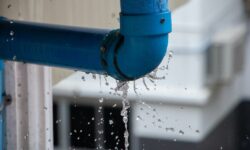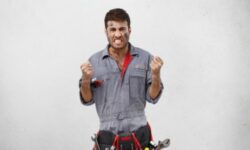How to Establish a Best Practices Baseline as a Security Technician
Tech expert Bob Dolph explains why UL Standards and NFPA 731 are good learning grounds for pros looking to develop their own performance baseline.

I have often suggested that techs should treat every installation as a project. And in project management, one learns early on to establish performance goals. In the spirit of our theme of best practices I am now asking you to treat yourself as an ongoing project and ask yourself, “What is my best practices baseline?”
In projects, a baseline would include things like cost (what is my budget?), time (what is my time window?) and scope (what are my set of requirements?). Your individual best practices baseline should be similar and be constantly improving with age, knowledge and experience.
This, in theory, all sounds great. However, what reference point do I, as a technician, have in establishing my best practices baseline?
Never fear, you are not the first to ask this important career question. The security industry over the years has addressed these concerns and has come up with many valuable resources if you are willing to take the time and dedication to research these practices. This month, we look at many of these valuable, often free, resources to help today’s technician attain their personal best practices baseline.
What got me thinking about this important theme were some recent upgrades in several industry performance standards of which you may or may not be familiar. First let’s introduce the organizations.
As the DIY community would like to make you think, all security systems are similar. If that is true, then why do insurance companies only accept certain types of alarm systems for high risk businesses? To answer this, we bring in UL.
Once upon a time you would have to pay to even review these revered UL standards. Now you can freely review them online through the “digital view” option on its website. It’s a very worthwhile read for any sincere dedicated professional.
Recently one of the security industry’s popular UL standards was updated to reflect some current technologies such as cellular communications, PSDN (packet switched data networks) and the communications Cloud. Updated for 2021 was UL 681 (Installation and Classification of Burglar and Holdup Alarm Systems).
This standard has always guided pros through five levels of security, known as extents of protection. Installed systems can receive a certificate issued by UL or be designated as a certificated alarm system. These systems are regularly inspected by UL staff to verify maintenance of their certification status.
We are all familiar with the National Fire Protection Association (NFPA) and its work over the years with standards for fire safety. Standards such as NFPA 72 have long been an official guide for the placement of devices such as smoke detectors.
But did you know that the NFPA for some time has also been in the business of creating physical and electronic security standards? There are two standards: NFPA 730 (Guide for Premises Security) and my favorite, NFPA 731 (Standard for the Installation of Premises Security Systems). What makes this even more exciting is they have both been updated with a 2020 revision. A better effort has been made to synchronize the two.
One of the things I like about NFPA 731 is the way it provides good examples of security systems application, location, installation, performances, testing and maintenance of premises security, access control and CCTV systems in all types of buildings.
This is a good learning ground for pros looking to develop their own performance baseline. These can also be reviewed for free in the “Free Access” online option (NFPA.org).
In the NFPA 731 writings I like the way it cross references specific UL standards. See chart below.
NFPA 731 Cross Reference for UL Standards
| Section | Category | Standards |
| 4 | Software/Cyber | UL 2900-2-3 |
| 5 | Windows/Doors | UL 634, UL 606, UL 639 |
| 5 | Walls | UL 639 |
| 5 | Interior Space | UL 639, UL 634, SIA PIR-01 |
| 5 | Vaults | UL 634, UL 639 |
| 5 | Safe/ATMs | UL 634, UL 639 |
| 6 | Access Control | UL 294 |
| 7 | CCTV | UL 50, UL 2044, UL 2802, UL 60065, UL 60950-1, UL 62368 |
| 8 | HUA/Duress | UL 636, SIA CP-01 |
| 9 | Monitoring | UL 1076, UL 827, SIA CP-01 |
Tool of the Month
Ugly’s Electrical Reference tool has been around for more than 35 years. The popular and handy pocket reference book is now available as a smartphone app.
Keep up to date on the 2020 NEC (NFPA 70), review Ohm’s Law, multimeter testing tips and more.
If you enjoyed this article and want to receive more valuable industry content like this, click here to sign up for our FREE digital newsletters!

Security Is Our Business, Too
For professionals who recommend, buy and install all types of electronic security equipment, a free subscription to Commercial Integrator + Security Sales & Integration is like having a consultant on call. You’ll find an ideal balance of technology and business coverage, with installation tips and techniques for products and updates on how to add to your bottom line.
A FREE subscription to the top resource for security and integration industry will prove to be invaluable.









I find it really interesting that the article is all about UL and how using best practices and following standards are important and the picture is of a camera and the conduit is just shoved though holes drilled into the junction box instead of using the correct EMT fittings and using the correct knock outs in the box.
Thanks for pointing that out, Morgan. It was just a stock art image grabbed by the web team that they thought properly illustrated the topic. It has been changed. The SSI editorial staff has always and continues to take the matter of accurately depicting the proper practices and aspects of the professional electronic security industry correctly very seriously. I appreciate you helping police us of that duty!